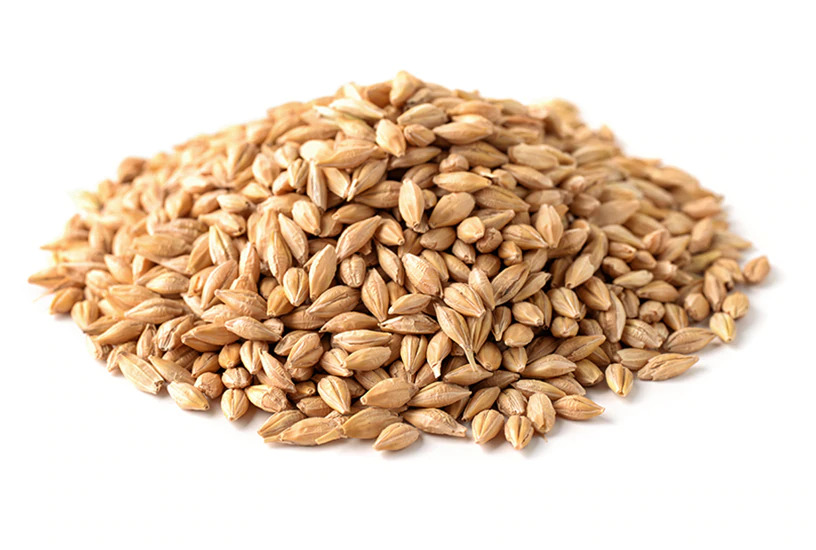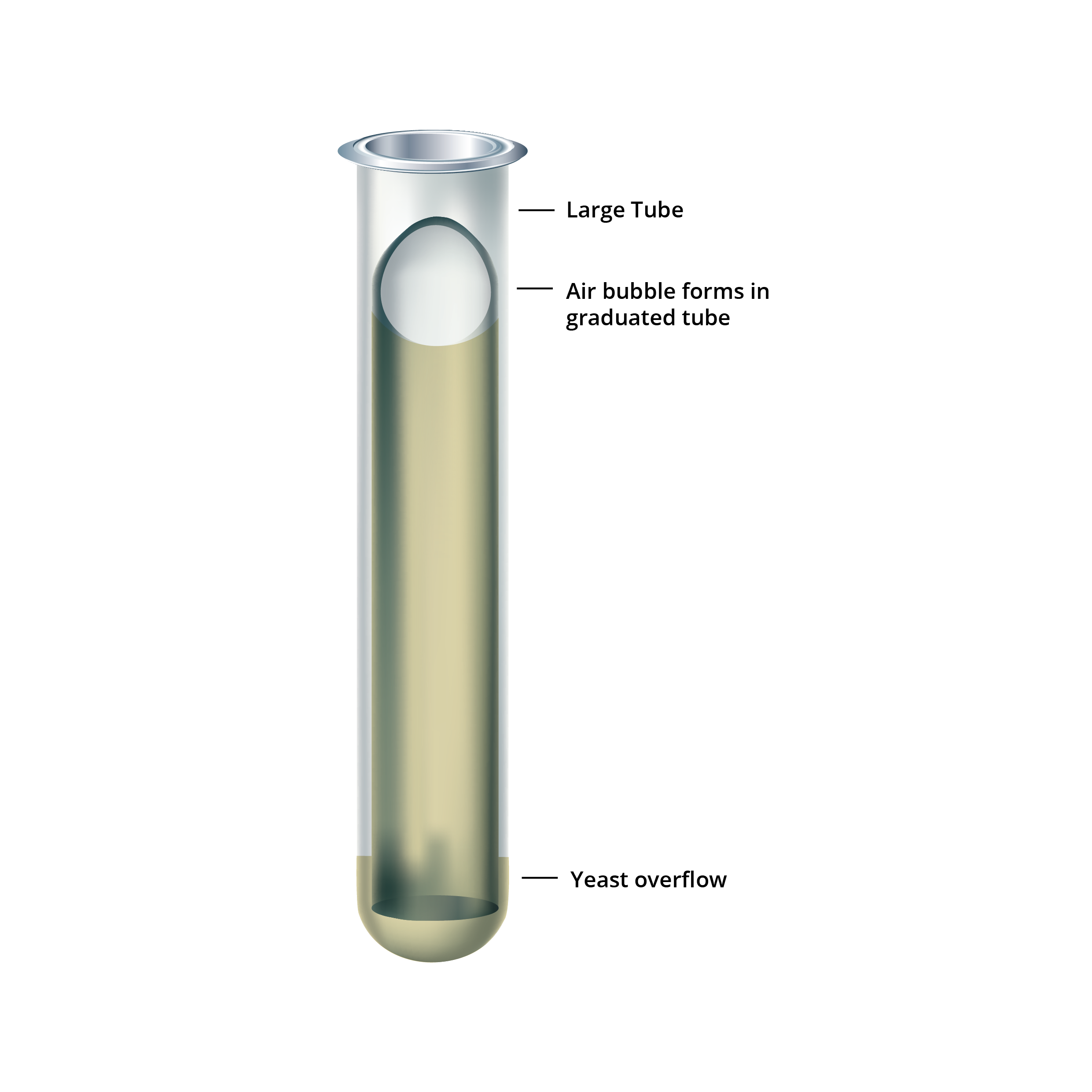Cellular Respiration and Fermentation
- Biology
- Classroom Practicals
- Cells
- Year 11 & 12

AUSTRALIAN CURRICULUM ALIGNMENT
- In eukaryotic cells, specialised organelles facilitate biochemical processes of photosynthesis, cellular respiration, the synthesis of complex molecules (including carbohydrates, proteins, lipids and other biomacromolecules), and the removal of cellular products and wastes (ACSBL049)
- Cellular respiration is a biochemical process that occurs in different locations in the cytosol and mitochondria and metabolises organic compounds, aerobically or anaerobically, to release useable energy in the form of ATP; the overall process can be represented as a balanced chemical equation (ACSBL053)
- Cells require inputs of suitable forms of energy, including light energy or chemical energy in complex molecules, and matter, including gases, simple nutrients, ions, and removal of wastes, to survive (ACSBL044)
- Photosynthesis is a biochemical process that in plant cells occurs in the chloroplast and that uses light energy to synthesise organic compounds; the overall process can be represented as a balanced chemical equation (ACSBL052)
BACKGROUND
Cellular respiration refers to a series of metabolic reactions and processes within a cell that convert nutrients into biochemical energy and then into Adenosine Triphosphate (ATP), releasing waste products along the way. Respiration is key to fuelling cellular activity and is considered an exothermic redox reaction as it releases heat. Respiration in animal and plant cells commonly relies upon nutrients such as, sugar, amino acids and fatty acids, and oxygen. Aerobic respiration relies on oxygen for the production of ATP. Similar to cellular respiration, fermentation produces ATP. However, unlike cellular respiration, which uses oxygen in a chemical reaction, fermentation occurs in anaerobic or oxygen-depleted environment. Fermentation refers to metabolic processes that cause chemical changes to occur in organic substrates through the action of enzymes. Energy is extracted from carbohydrates in the absence of oxygen. Microorganisms employ fermentation and degradation of organic nutrients anaerobically to produce ATP. Comparative to cellular respiration, fermentation releases less energy as the lack of oxygen means the sugar molecule doesn’t break down completely.
Within introductory biology, cellular respiration and fermentation remain very challenging concepts for students to grasp. This practical provides interactive methods for students to observe and better understand the two concepts. Students will observe respiration by detecting the carbon dioxide produced in germinating seeds. The second procedure allows students to observe carbon dioxide gas production in yeast fermentation.
PREPARATION- BY LAB TECHNICIAN
Preparing for Procedure 1
- Rehydrate seeds 2 days prior to planned use. To do this, place them in a beaker and cover with dechlorinated water until the depth reaches 3 times their height in the container. This will allow you to compensate for seed expansion as a result od swelling. Soak seeds overnight.
- Pour out water, wrap the seeds in a wet paper towel and then place in sealable plastic bag. Seal the bag and store away from sources for 2 night
Preparing for Procedure 2
- Prepare 10% sugar solutions. Dissolve 10g sugar to 80mL distilled water. Make up volume to 100 mL. Glucose and sucrose can be fermented by yeast; however, it cannot ferment lactose or sucralose (artificial sweetener).
- To prepare yeast suspension, warm 70 mL of distilled water to approximately 37° C and add 7 g of yeast (1 packet). This solution will be sufficient for 8 procedures using a 15-mL conical tube for the small tube. Scale up or down to create the required volume required for your class. Swirl for 1-2 minutes to activate the yeast. Make sure that the yeast is evenly distributed in the suspension. Clumps in the solution will generate inconsistent results. The yeast suspension should be made immediately before class as fermentation rates reduce over time.
- Dilute the yeast 1:1 with the sugar solution so that the final concentration of sugar is 5%.
METHOD- STUDENT ACTIVITY
Procedure 1: Demonstrating Aerobic Cellular Respiration with Germinating Seeds
- Prepare the Bromothymol Blue solution by adding approximately 30 drops (1.5 mL) of 0.04% Bromothymol Blue to 80 mL of distilled water. The solution should turn green as the water is added. Be aware that the pH of your water source will affect the shade of green.
- Make a slightly basic solution by adding drops of Sodium Hydroxide to the Bromothymol Blue until the solution colour changes from green to a deep blue. This process is likely to require 10 - 20 drops. The use of a slightly basic solution makes it easier to observe colour changes.
- Place rehydrated seeds in a test tube until it is ¾ full and add the Bromothymol Blue solution to completely fill the test tube. Use a rubber stopper to seal the tube.
- Prepare a control tube by pouring Bromothymol Blue solution into an empty test tube until it is full. Use a rubber stopper to seal the tube.
- Set the samples aside for inspection at the end of the class (or overnight).
- Observe colour changes in the solution or any other changes you may observe.
Procedure 2: Demonstrating Fermentation with Yeast
- Fill the smaller graduated fermentation tube with the provided yeast suspension.
- Invert the large tube and slide it over the smaller tube.
- Firmly holding the tubes together, invert the apparatus so that the large tube is upright (see Figure 1).
- A small amount of yeast suspension will flow out of the graduated tube, causing a small air bubble to form in its tip.
- Record your observations of the yeast and the amount of carbon dioxide collected in the graduated tube at regular intervals for 15 min. You will need to subtract the volume of the original air bubble to get your final measurements.
 OBSERVATION AND RESULTS
OBSERVATION AND RESULTS
Results: Demonstrating Aerobic Cellular Respiration with Germinating Seeds
- Bromothymol blue is a pH indicator that appears blue in an alkaline (base) solution and yellow in an acidic solution.
- When carbon dioxide is added to the solution, the surrounding the seeds combine with water to form carbonic acid (H2CO3), turning the Bromothymol Blue to a yellow-green colour.
- Remove the carbon dioxide from solution and the Bromothymol Blue will turn a deeper blue.
Results: Demonstrating Fermentation with yeast
-
The volume of carbon dioxide released is proportional to the quantity of sugar fermented and therefore provides a measure of fermentation.
INVESTIGATIONS
Procedure 1: Demonstrating Aerobic Cellular Respiration with Germinating Seeds- Ask students to consider the seeds’ respiration. Students should be able to identify the presence of oxygen in the test tube, and the carbon dioxide gas as a by-product of aerobic cellular respiration.
- Ask students to explain the purpose of the control tube containing only Bromothymol Blue solution.
- Ensure students understand the volume of carbon dioxide released is proportional to the quantity of sugar fermented, therefore providing a measure of fermentation. Ask students to explain the process of fermentation. Their answers should identify fermentation as the result of the actions of enzymes.
- Ask students to identify the types of sugars yeast is able to ferment. Explain that the sugars yeast is able to ferment is dependent on the yeast cell containing the necessary enzyme(s) to break down the molecule. Use the example of Baker’s yeast to reinforce this idea; baker’s yeast only contains the enzymes necessary to break down glucose and sucrose and does not contain the enzymes necessary to break down lactose or sucralose.
EXTENSION EXERCISE
-
A great extension activity for this practical is to create and store duplicate samples in a dark environment to rule out any possible effects of photosynthesis on the experiment.
 Time Requirements
Time Requirements
- 45 mins
 Material List
Material List
- Sealable Bag
- Bromothymol Blue Solution (0.04%)
- Sodium Hydroxide (1%)
- Test Tubes
- Rubber Stoppers
- Flask (250 mL)
- Test Tube Rack
- Distilled Water
- Paper Towel
- Sugars (Glucose, Sucrose, Lactose, and/or Sucralose - artificial sweetener)
- Packet of Activated Dry Yeast
- Fermentation Tubes (1 plastic graduated test tube and 1 larger glass test tube)
- Graduated Cylinder (100 mL)
- Balance
- Hot Plate
 Safety Requirements
Safety Requirements
- Wear appropriate personal protective equipment (PPE).
- Know and follow all regulatory guidelines for the disposal of laboratory wastes.
- Avoid any direct contact with the Bromothymol Blue and sodium hydroxide solutions
- Wash hands thoroughly before and after handling any chemicals.
- Sterilise work surfaces before and after the practical.
- Under no circumstances are the materials used in this practical to be consumed as food.
